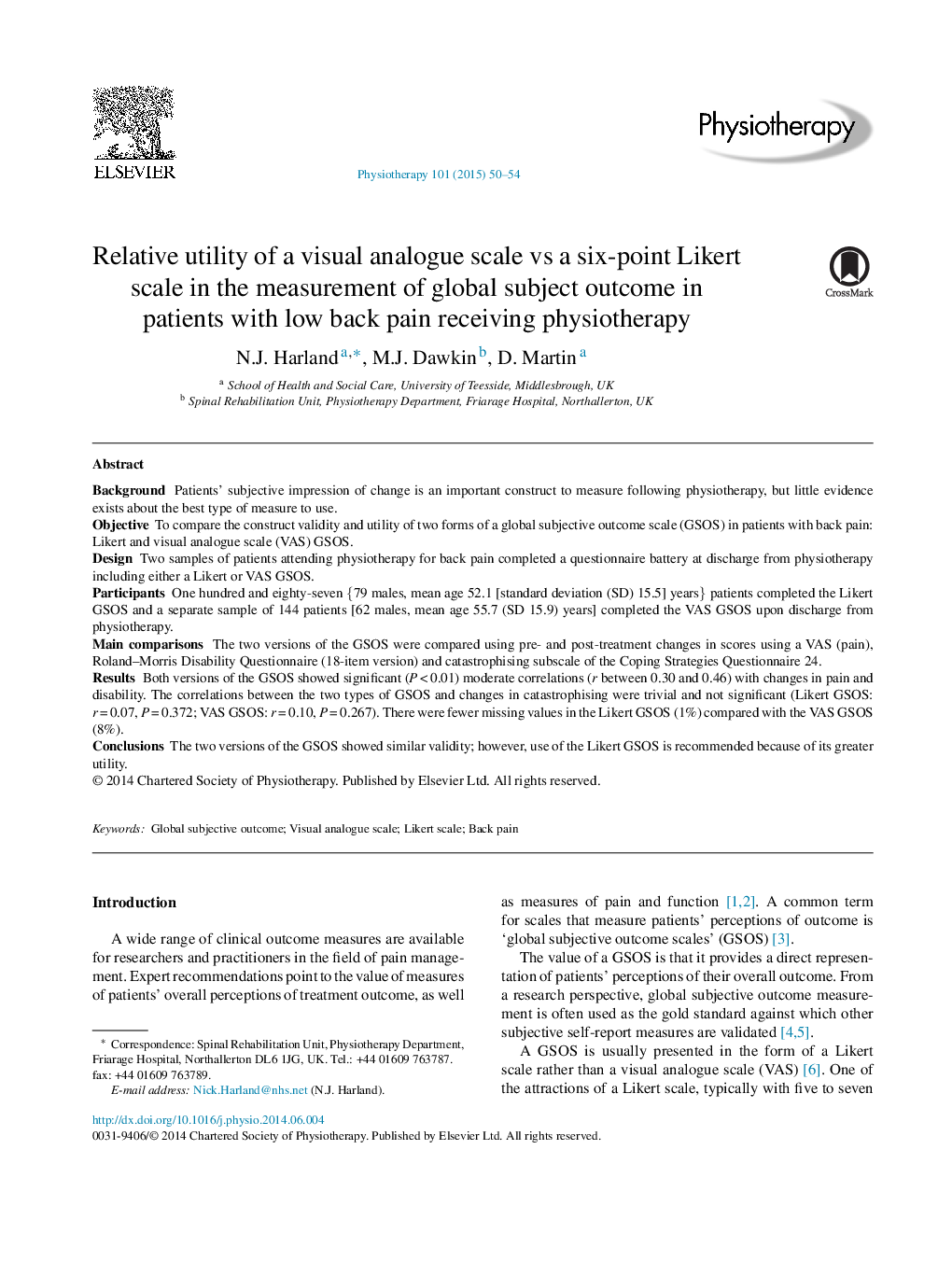| Article ID | Journal | Published Year | Pages | File Type |
|---|---|---|---|---|
| 2627191 | Physiotherapy | 2015 | 5 Pages |
BackgroundPatients’ subjective impression of change is an important construct to measure following physiotherapy, but little evidence exists about the best type of measure to use.ObjectiveTo compare the construct validity and utility of two forms of a global subjective outcome scale (GSOS) in patients with back pain: Likert and visual analogue scale (VAS) GSOS.DesignTwo samples of patients attending physiotherapy for back pain completed a questionnaire battery at discharge from physiotherapy including either a Likert or VAS GSOS.ParticipantsOne hundred and eighty-seven {79 males, mean age 52.1 [standard deviation (SD) 15.5] years} patients completed the Likert GSOS and a separate sample of 144 patients [62 males, mean age 55.7 (SD 15.9) years] completed the VAS GSOS upon discharge from physiotherapy.Main comparisonsThe two versions of the GSOS were compared using pre- and post-treatment changes in scores using a VAS (pain), Roland–Morris Disability Questionnaire (18-item version) and catastrophising subscale of the Coping Strategies Questionnaire 24.ResultsBoth versions of the GSOS showed significant (P < 0.01) moderate correlations (r between 0.30 and 0.46) with changes in pain and disability. The correlations between the two types of GSOS and changes in catastrophising were trivial and not significant (Likert GSOS: r = 0.07, P = 0.372; VAS GSOS: r = 0.10, P = 0.267). There were fewer missing values in the Likert GSOS (1%) compared with the VAS GSOS (8%).ConclusionsThe two versions of the GSOS showed similar validity; however, use of the Likert GSOS is recommended because of its greater utility.
